Hidden Steel Stabilizes this Custom Bench
Nancy Hiller designs a two-seater bench for a space between kitchen and dining room.
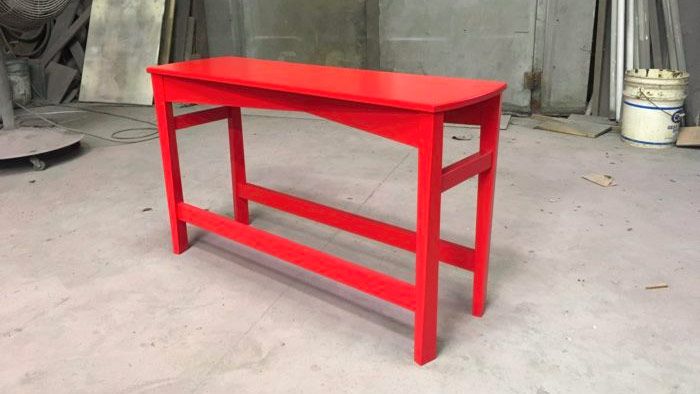
A couple of clients whose kitchen cabinetry I designed and built 18 months ago asked me to come up with a bench for the peninsula between their kitchen and dining room. They’d looked online and found nothing quite right.
The brief: The bench would have to seat two people, as their twin daughters often sit together doing homework; it must also work with the aesthetic of this in-between space, avoiding too-close identification with either room.
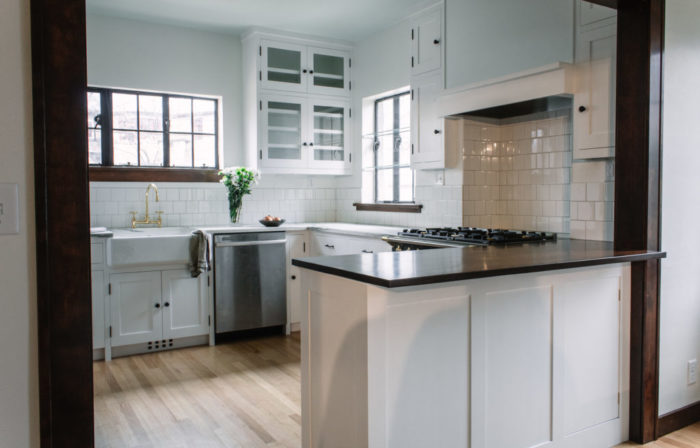
I suggested three possibilities:
- a wooden bench in a style related to the kitchen cabinets
- an upholstered bench in a style related to their modernist dining chairs
- a wooden bench that echoed a pair of minimalist, red-lacquered chairs they kept in the dining room corners for a little bit of zing.
They chose the red chairs. Besides their striking color, the chairs had compound-tapered legs, plywood seats with subtle concave and convex curves for their outline, and nearly-invisible bracing that tied the legs together.
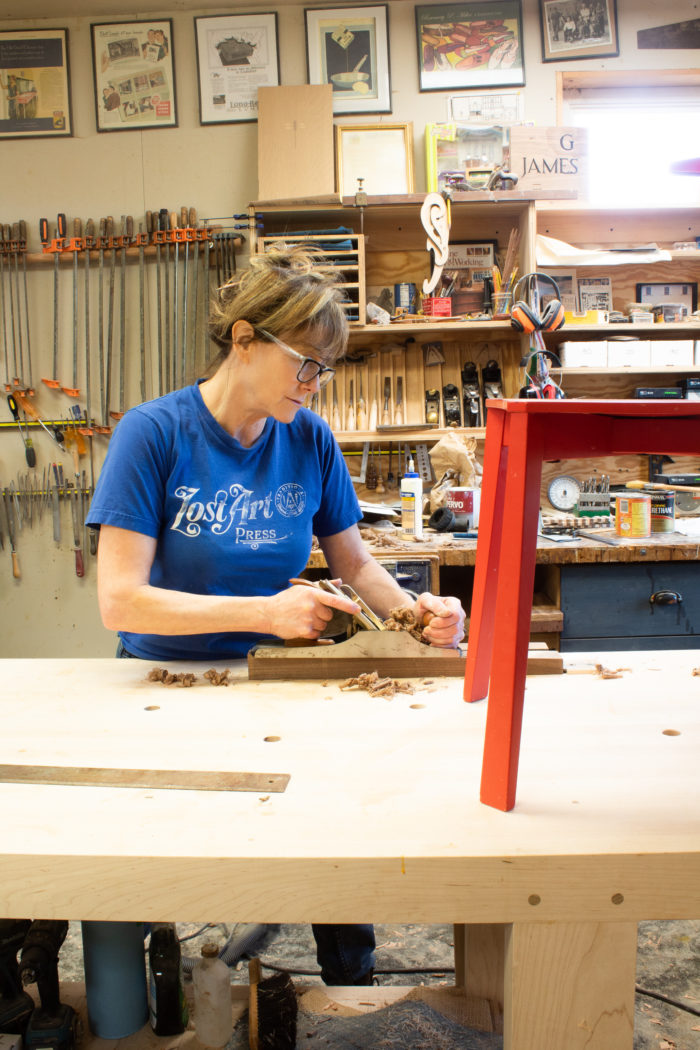
I scaled up the dimensions of the chair legs in keeping with the bench’s greater length and height. Instead of the outward flare of the chairs’ legs, I decided to cut the tapers so that the apparent flare went inward. That kept the legs from sticking out farther than the benchtop at floor level, something I was concerned would pose a tripping hazard. It also allowed me to make the joints for the stretchers at 90°.
To ensure the bench’s four legs would be identical (which was important for the joinery), I made a couple of jigs for use at the tablesaw.
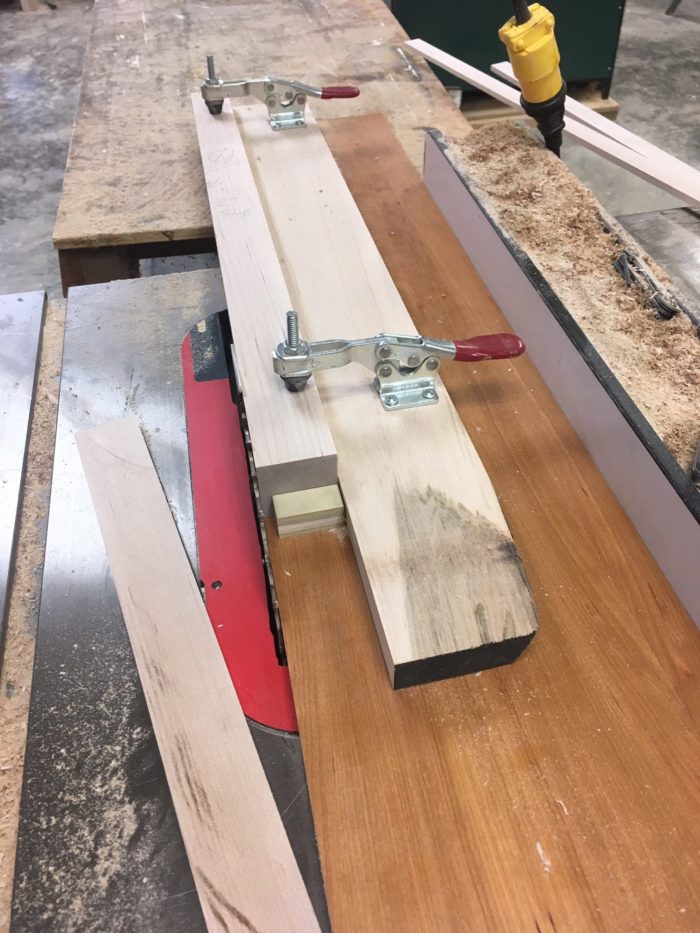
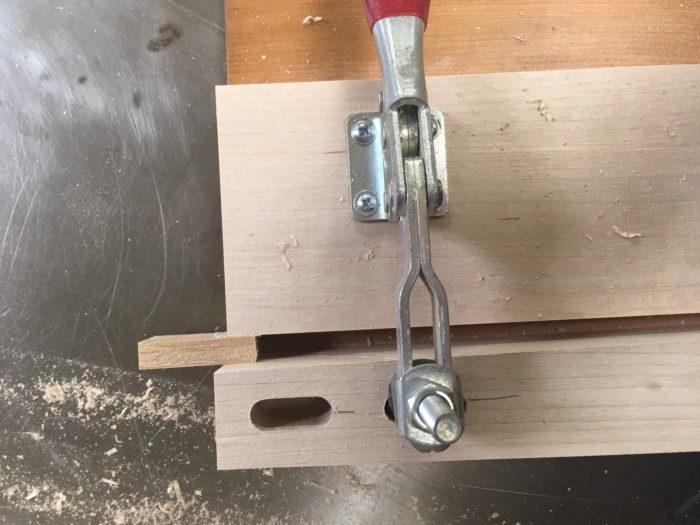
Next we discussed dimensions. A piano bench topped with several hefty hardback books gave us an ideal height for those who are going to use the bench: 25 in. The length had to accommodate two people without appearing too long relative to the peninsula; we settled on 42 in. The clients liked the narrow look of the piano bench and wondered whether I could make the new piece narrower still—perhaps 11 in.? This brought me to the first challenge: A bench that tall and narrow, with such minimal structure below, would be potentially unstable. We compromised at 13-1/4 in.
I recommended stretchers lower down on the legs to tie the ends together, augmented by short stretchers higher up at each end. Without these, I was concerned the criss-cross apron under the seat would leave the bench vulnerable to weakening over time. The clients suggested the low stretchers would function well as footrests and gave me the ideal height for the top edges.
I built a rough full-scale mockup to give us all an accurate sense of the space the bench would occupy, as well as to let the clients try it out for sitting, just to make sure they were happy with the dimensions before I started work on the actual piece. A bit of fine-tuning, and we had the details nailed down.
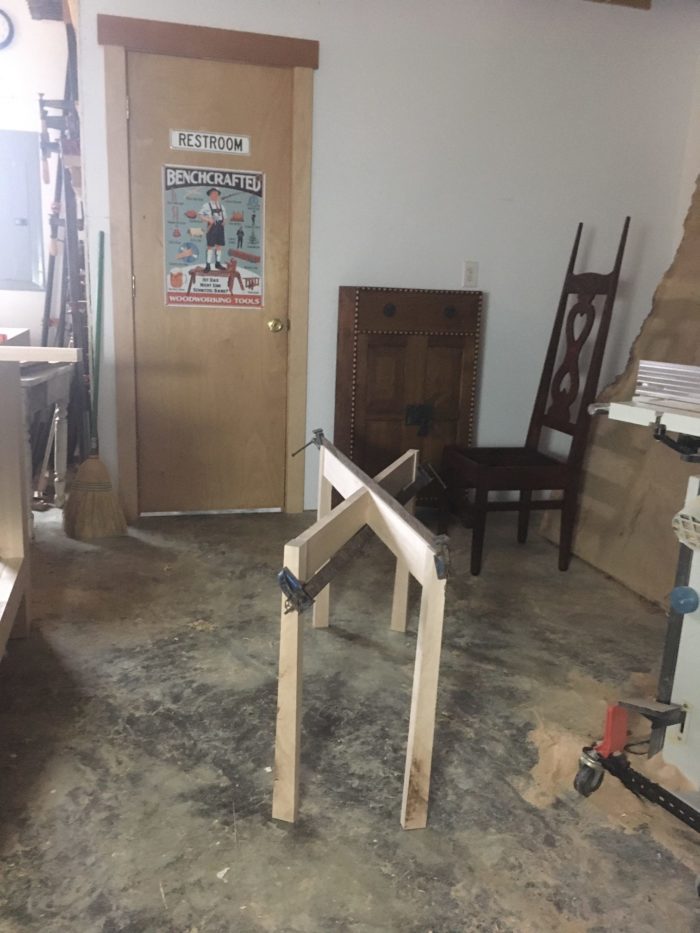
The apron is made of two pieces notched over each other and glued. The rest of the joints are Domino tenons.
Once I had the basic structure together, I laid a piece of plywood on top and carefully sat down on the bench to see how it felt. The tall, skinny form still struck me as top-heavy; I wanted to lower the center of gravity. I often use steel angle to enhance rigidity over long expanses; steel would add the necessary weight to make this bench far more stable. I decided to embed two pieces of ½-in.-square steel rod invisibly in each long stretcher. To do so, I cut a groove on the tablesaw using a Forrest special-grind flat-bottom dado blade, making several passes to get the necessary width.
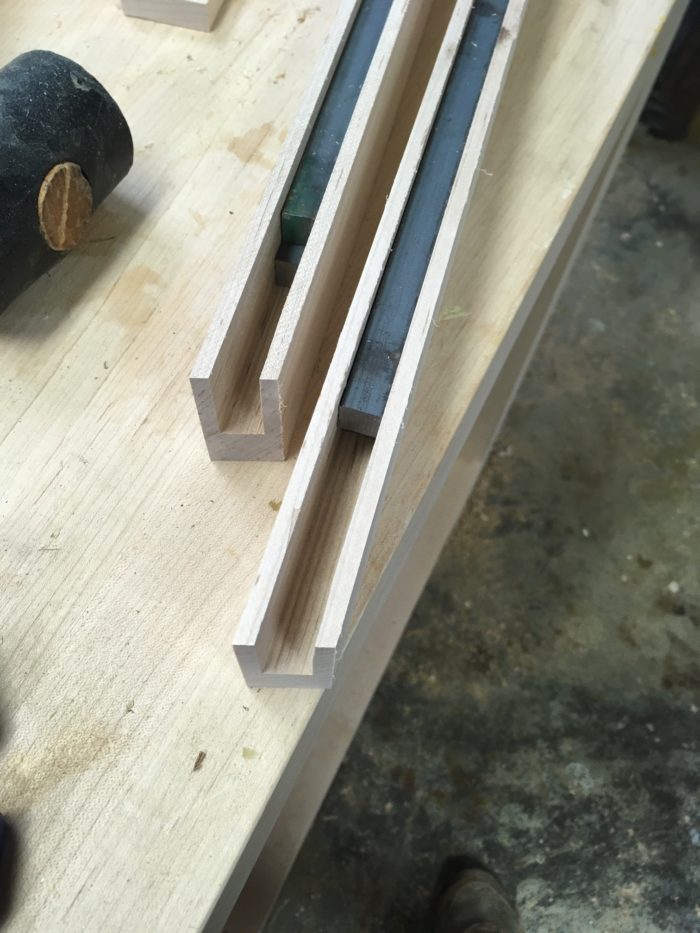
To join the stretchers to the legs I would need a couple of inches of solid wood at each end of the groove, so I filled the grooves at each end with maple cut to fit. Then I capped the tops with a maple lid, which I trimmed to width and length after the glue was dry.
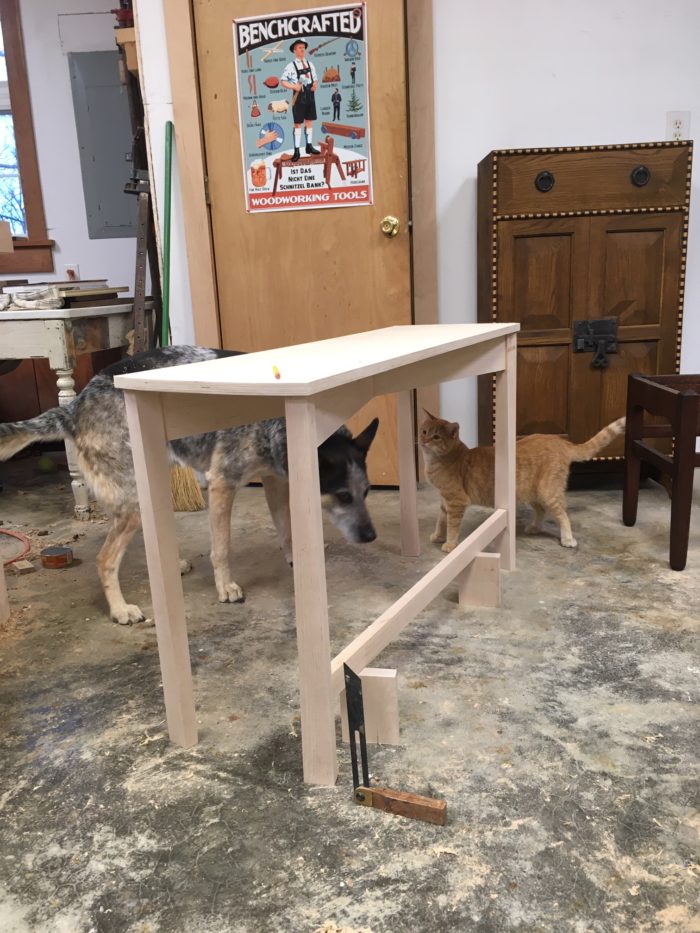

The seat is made from 3/4-in. Baltic-birch plywood cut to shape on the bandsaw, then trimmed with a router and top-bearing bit. After cleaning up the bench, I had David Willibey of Bloomington Coatings spray it with Sherwin Williams paint matched to the original red of the chair.
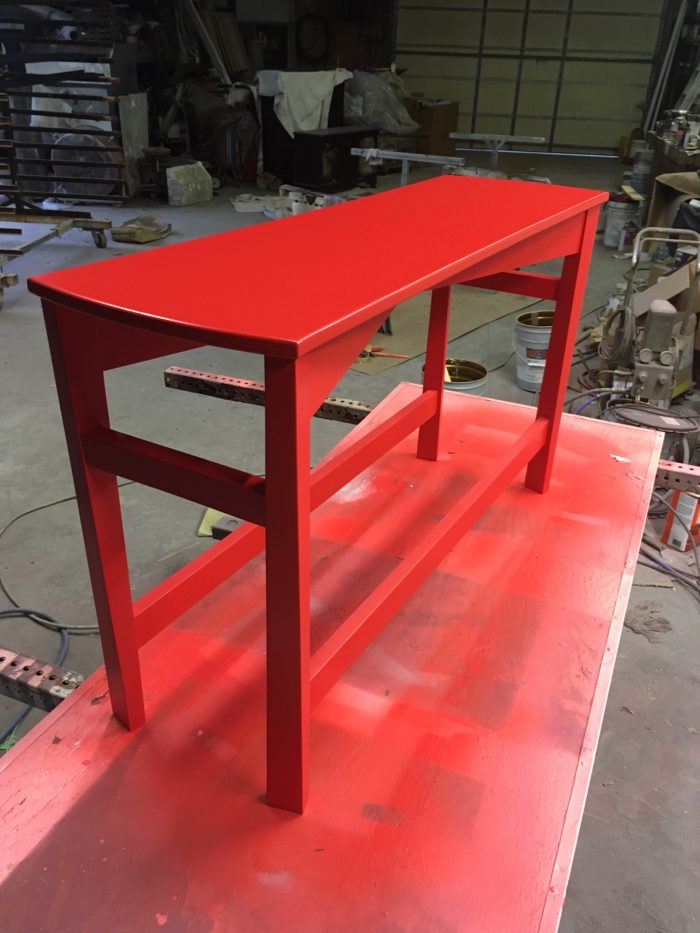
Nancy Hiller is a professional cabinetmaker who has operated NR Hiller Design, Inc. since 1995. Her most recent books are English Arts & Crafts Furniture and Making Things Work, both available at Nancy’s website.
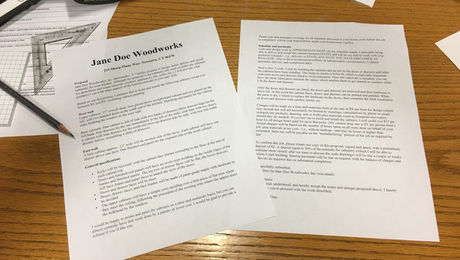 |
|
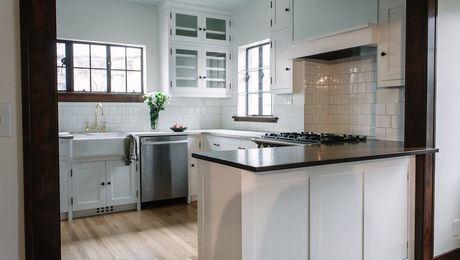 |
|
 |








Comments
Very nicely done. I'll bet the girls just love this bench, because it is so cool.
Let's hope!
Steel and wood, I guess that makes Nancy a "Mixed Media Maker" :-)
Simple and elegant solution. That's what separates the pros from us weekend warriors.
Thanks Nancy !
Looks like Joey and Tony approve.
Log in or create an account to post a comment.
Sign up Log in